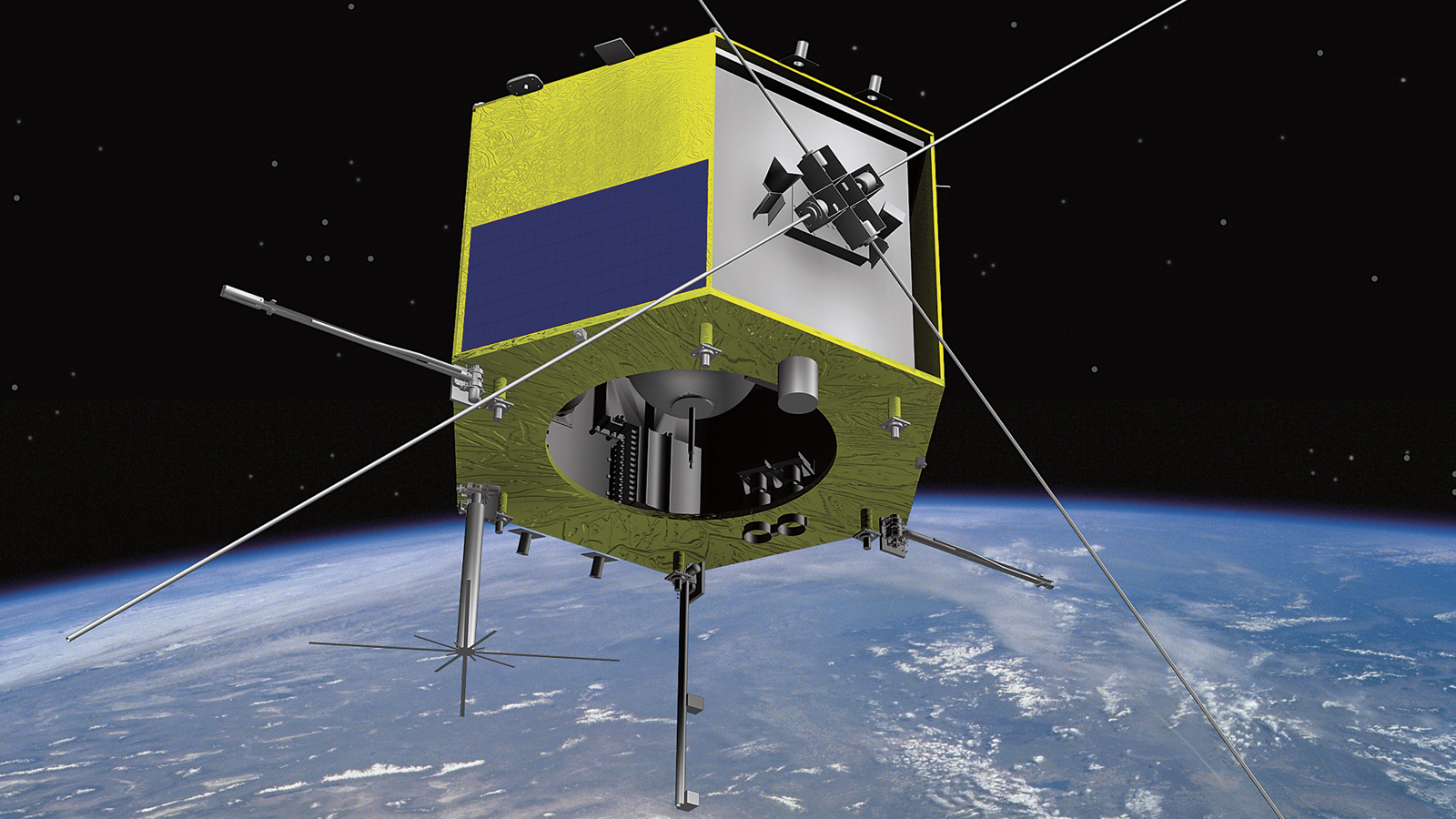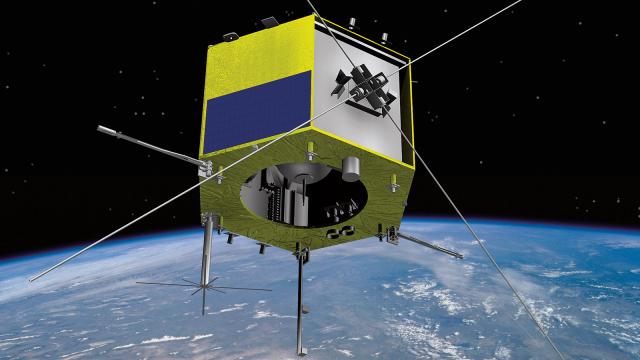With an average global broadband connection speed of just 3.1Mb/s, the internet has become one enormous bottleneck for those that send large amounts of data across it. At that speed, a 100GB file would take around three days to transfer completely, eons too long in a digital era measured by millisecond pings. But a new double-duty satellite launched yesterday could cut that transfer time to just 90 minutes.
The Canadian Space Agency has been tinkering with the micro-satellite platform that would become the basis for the CASSIOPE program since 1996. The satellite that went up yesterday measures roughly 1.2m wide by 1.8m tall and weighs about 499kg. It houses two payloads: The enhanced Polar Outflow Probe (e-POP), an eight-instrument scientific suite to study the interplay of solar storms in the upper atmosphere in hopes of nullifying their effects on GPS and orbital communications, and the Cascade Technology Demonstrator, a proof of concept orbital data courier.

The idea behind the Cascade is simple. Since terrestrial internet pipes are clogged with cute kitten videos and porn, organisations could instead use a network of satellites to bypass it completely. The sender would first upload the file to the satellite as it passes overhead using a 2100Mb/s — double Google Fibre’s speeds — microwave transmission. The satellite would save the data in its on-board memory until it passes over the recipient’s location and then downloads it to them. And since the CASSIOPE satellite orbits the Earth more than a dozen times a day, the service would take no more than 90 minutes or so, depending on where the data is being sent.
Obviously, this isn’t the sort of service the average consumer is ever likely to use. MacDonald Dettwiler Space and Advanced Robotics Ltd (MDA), the parent company behind the CASSIOPE program is marketing it to large corporations, NGOs, and government entities such as disaster relief and humanitarian organisations, defence departments, and energy companies as a means of getting huge files to and from anywhere on the planet.
If the CASSIOPE satellite proves successful, MDA hopes to launch a fleet of the microsatellites to round out its coverage the globe. There’s no word yet on when the commercial venture will get under way or how many simultaneous transfers will be possible — or how long it’ll take Kim Dotcom to do the same with file sharing. [Quartz – MDA – Wiki – CSA]
